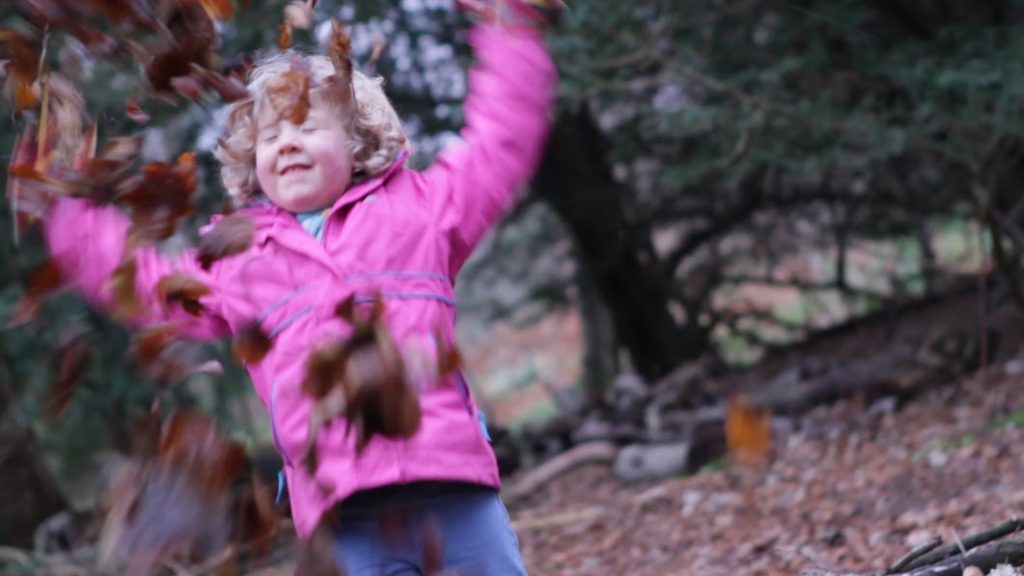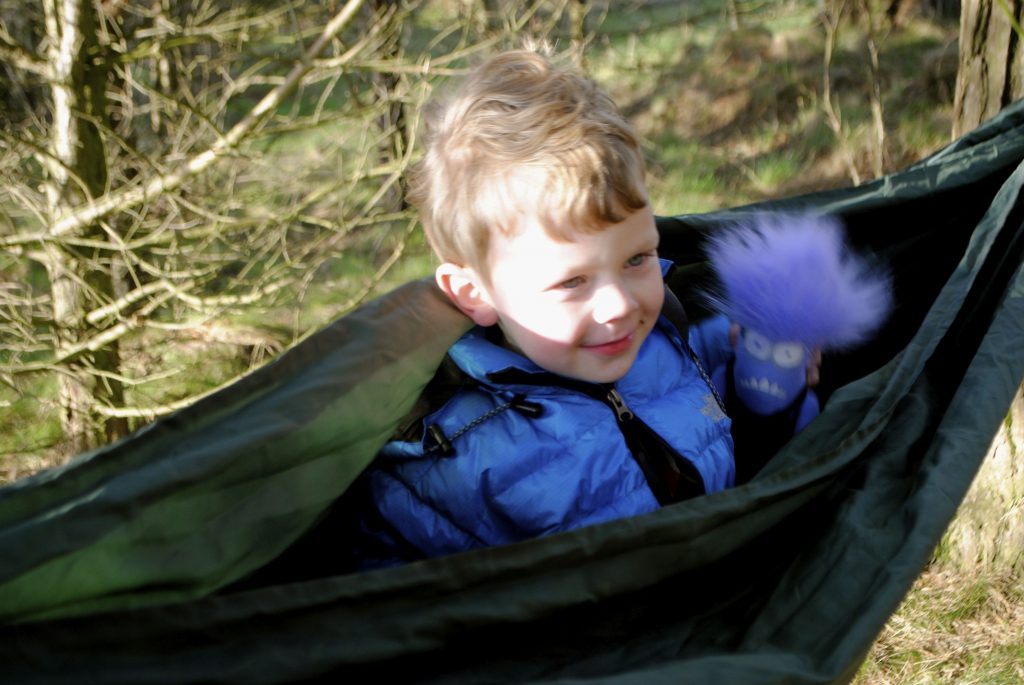The drastic decline in the time children spend outdoors is a concern for most parents. A recent survey of 2000 parents commissioned by the Eco Attractions Group (of which RBGE is a member) found that over three quarters of parents would like their children to spend more time playing outside and regret that their children spend less than half the time (average 5 hours/week) outdoors than they did (11 hours/week) when they were young. Along with time spent outdoors there has also been a decline in traditional nature-orientated activities like finding frog spawn, making daisy chains, playing pooh sticks or even splashing in puddles. Astonishingly less than half the families questioned in the survey had built sandcastles on the beach or had a picnic outside of their own garden.
Ahead of this survey the RBGE has been carrying out its own research on family nature play in the context of the Botanic Garden. The ‘wild’ corner of the Demonstration Garden, with a small area of semi-natural woodland, wetland and meadow, proved a perfect site to explore two questions: how can we encourage and support free, unguided, interaction with nature? and what impact does nature play have on the diversity and condition of the site? We invited over 300 children and their parents or carers into the space, over six glorious warm and sunny days last summer, and gave them permission to explore, interact and play. We didn’t have an outcome in mind – we just wanted to observe and record what went on. Minimal additions were needed in a naturally diverse space: a couple of hammocks, a few sit-mats and rugs, round beach pebbles, a running hosepipe and some pond nets helped facilitate play but were not seen as essential. The site itself, the plants, meadow, pond and fallen trees provided the main stimulation for both exploration and imaginative play.
Slowing down activity, for example by using the hammocks or rugs, helped make children more aware of additional dimensions – birdsong, wind and smells around them. The play we observed was unpredictable and children would sometimes explore the perimeter of what was possible or permissible but they never stepped over the unmarked boundary putting themselves or the plants at risk.
We made careful note of all disturbance caused by children to the plants. What we found is although disturbance was apparent, especially in the grassland, immediately after the activity, it was not long- lasting. There was no significant damage caused to any of the plants or vegetation and this gave us confidence to continue to recommend that all botanic gardens consider nature play as a legitimate activity which can encourage a deeper connection and empathy with nature, especially among younger children.
We are very grateful to all the families, volunteers and staff who took part in this project and to the Calouste Gulbenkian Foundation who funded the research. A report by Clare Nugent and film by Sabine Hellman will be available shortly and we will announce these on this blog. Meanwhile if you have any questions, comments or ideas relating to nature play or the Eco Attractions Group survey please contact me i.edwards@rbge.org.uk.



Marta Sanchez
My son and me were very happy to participate in the project, gald the outcome it’s been,on my eyes, very positive.
My son appears on both the video and the report (he is the one blowing the dandelion) and i’m very happy with his appearence, nothing wrog with it. In fact i think the video and photos taken are very nice and they really show how the kids enjoy the botanic garden.
Love it!!
Well done nature play!!
Marta